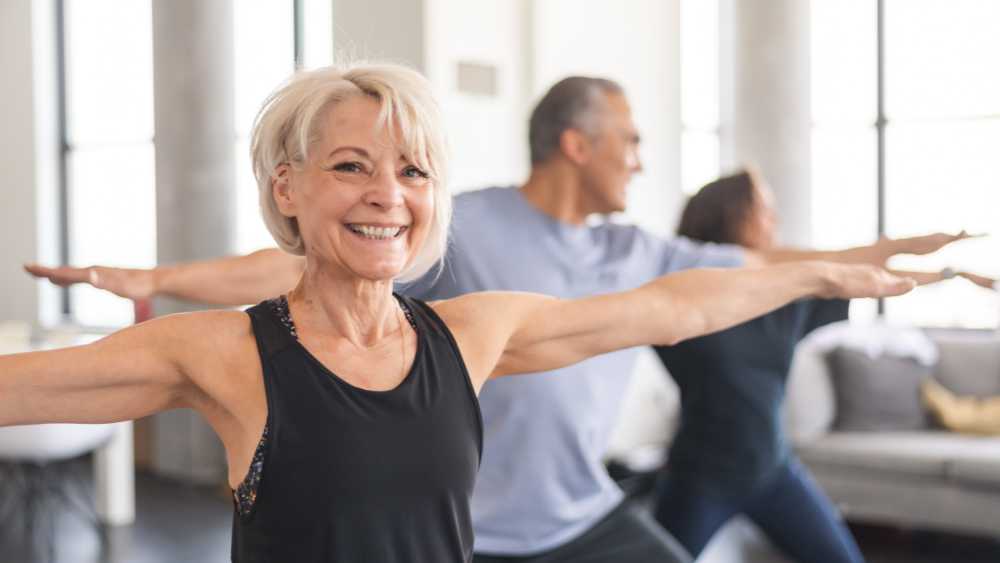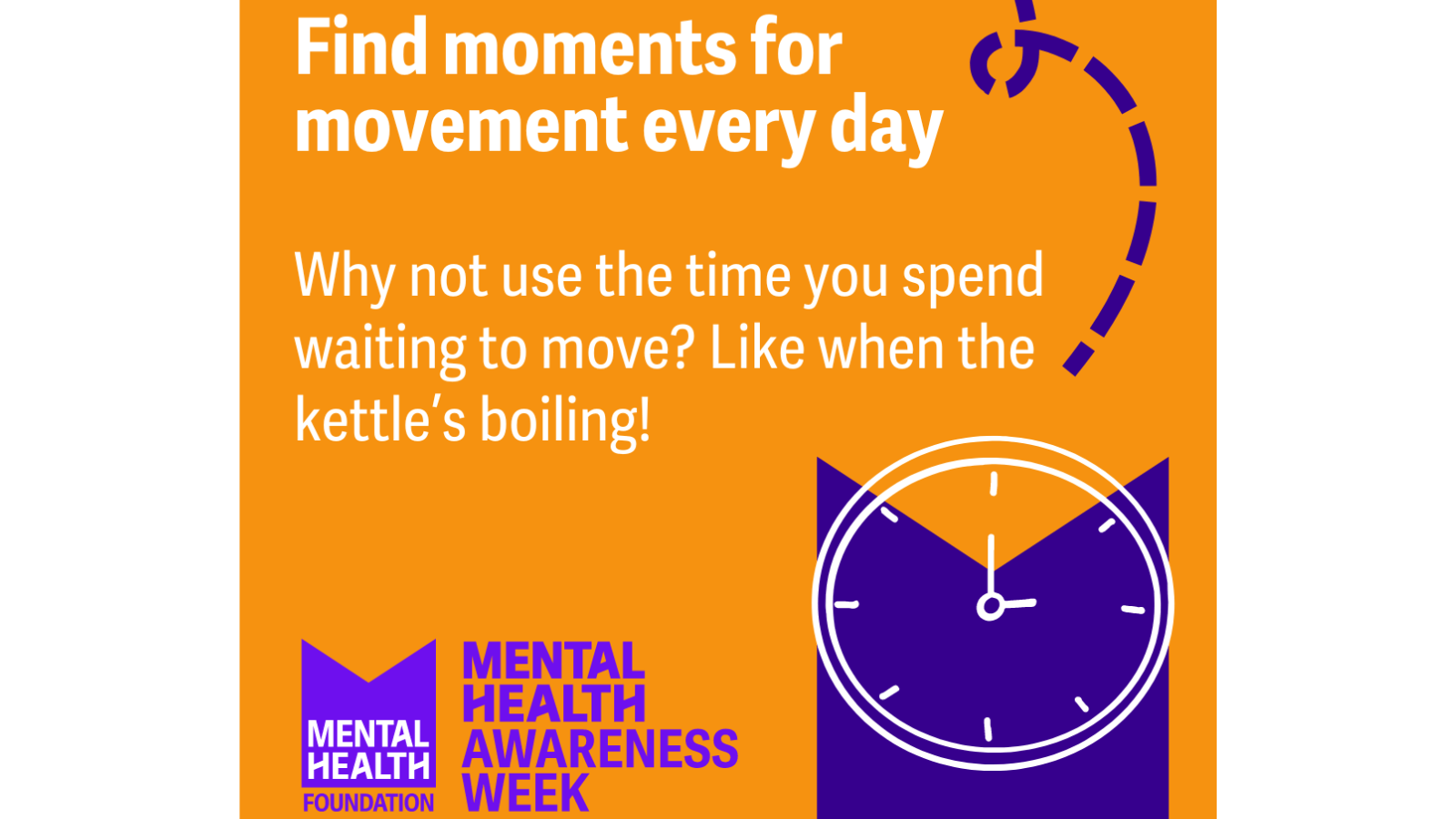Introduction – How is exercise good for mental health?
May is Women’s Mental Health Month. Mental Health Week runs from 13th-19th and the theme this year is exercise – a topic close to my heart, personally and professionally.
As you might expect, research consistently reinforces the facts that a healthy diet and lifestyle are foundational for good brain health. A brain-healthy lifestyle includes regular exercise, social engagement, a healthy diet (more on this in my Mood Food blog), mental stimulation, quality sleep, regular stress management practices and attention to good vascular health.
We start by looking at mental health symptoms through menopause and how exercise benefits mental health generally. I’ll highlight studies that demonstrate the effectiveness of exercise for different mental health conditions and which are the particularly beneficial types of exercise. Finally, I’ll offer some practical exercise tips and the role of osteopathy in mental health to finish.
Are menopause and mental health symptoms linked?
Changes in your hormones during menopause can impact your mental health as well as your physical health. There are oestrogen receptors throughout the body, including the brain, and as oestrogen levels naturally fluctuate and eventually fall, this can cause mood swings, low mood and anxiety. You may have experienced menopausal and postmenopausal symptoms such as:
- anxiety
- forgetfulness
- loss of self-esteem
- loss of confidence
- low mood and feelings of sadness or depression
- anger and irritability
- poor concentration – often described as ‘brain fog’ and/or lost words
How is exercise good for mental health?
We have all felt good after doing exercise like swimming, walking, cycling, running and dancing. These aerobic exercises have all been shown to improve self-esteem and cognitive function, but they also help reduce anxiety and depression (1).
The positive effects on mood are thought to happen because exercise increases blood flow to the brain and affects how the body responds to stress. This change in the body’s stress response is likely due to how exercise helps different parts of the brain communicate better. These parts include areas that handle our motivation, mood, and memory, as well as how we experience fear (2).
Is ther a best type of exercise for mental health?
A very comprehensive analysis in The British Journal of Sports Medicine reviewed 97 studies involving over 100,000 participants. Researchers found that physical activity is crucial for alleviating symptoms of depression, anxiety, and distress (3).
They concluded that “physical activity should be a mainstay approach in the management of these conditions”. Other key takeaways include:
- Any form of exercise is beneficial
- Higher intensity exercise provides greater mental health benefits.
- Less than 2.5 hours of exercise per week is often more advantageous than more. More doesn’t equal better.
- Regular exercise, about four to five times per week, whether for 30 minutes or an hour, is effective.
- there was no difference between 30-minute workouts and hour long ones
Why Exercise Matters for Mental Health
As the Mental Health Foundation says, “Being active releases chemicals in your brain that make you feel good – boosting your self-esteem and helping you concentrate as well as sleep well and feel better”.
There are multiple mental health benefits of exercise. Doing an exercise you enjoy can:
- give purpose & motivation
- reduce stress & tension
- ease troublesome aches and pains
- boost your energy
- connect you with others
- give a sense of achievement & confidence
- improve focus and motivation
- reduce negative feelings like anger & frustration
- Be fun!
According to the Anxiety and Depression Association of America, regular participation in aerobic exercise has been shown to decrease overall levels of tension, elevate and stabilise mood, improve sleep, and enhance self-esteem. Even five minutes of aerobic exercise can stimulate anti-anxiety effects (4).
Exercise & mental health conditions
Stress and anxiety
Stress tightens our muscles, which can give us back pain, neck pain and headaches. Physical activity helps to relax the muscles, realign joints and relieve tension. Exercise also relieves pain through the release of feel-good brain hormones, called endorphins.
Cardiovascular exercise improves circulation, digestion and immune function, which in turn help protect your body from other harmful effects of stress.
A single session of exercise can distract you from your worries, and when done regularly, can make you feel more optimistic, calm and in control.
Exercise is a natural and effective anti-anxiety treatment. It releases a whole host of anti-anxiety brain chemicals like serotonin. It activates our thinking brain and quietens our emotions brain which helps to build our stress resilience and lower anxiety.
Cognition
There is a lot of evidence that physical exercise not only changes the structure and function of the brain, but also greatly improves both mental performance and overall well-being.
This study is the most thorough review of randomised controlled trials (RCTs) in adults over 50 years old to date. It found that an exercise program that includes both aerobic and strength training, with moderate intensity for at least 45 minutes per session on most days of the week, helps improve brain function in adults older than 50 (5).
Alzheimers & dementia
Studies have also shown that exercise can help slow down the progression of cognitive problems in those who have already started to experience them.
The Alzheimer’s Society UK states that regular exercise can lower the risk of developing dementia by approximately 28%. Specifically for Alzheimer’s disease, the risk reduction is about 45%. This information is based on an analysis that combined the results from 16 different studies on exercise and dementia (6).
Depression
A study featured in the British Medical Journal aimed to determine the most effective amount and type of exercise for treating major depressive disorder. The analysis of 218 studies found that exercise is a valid treatment for depression. Specifically, activities like walking, jogging, yoga, and strength training are particularly beneficial, especially when performed with high intensity. The study recommends that doctors should prescribe these forms of exercise in combination with psychotherapy and antidepressants as fundamental treatments for depression (7).
Practical Exercise Tips
- Start Small: If you’re not currently active, start with small, manageable steps. Try activities like walking or gentle yoga. The goal is to move more and sit less.
- Find Activities You Enjoy: Exercise shouldn’t be a chore. Whether it’s dancing, swimming, or biking, finding an activity you love can make exercise something to look forward to rather than something to check off your to-do list.
- Set Realistic Goals: Set achievable goals that motivate you without being overwhelming. Progress might be slow, but consistency is key.
- Buddy Up: Exercising with friends can not only make you more likely to stick with it but can also provide emotional support and accountability.
- Listen to Your Body: Always listen to your body and adjust your activity level based on your needs. This is especially important to avoid injury and burnout.
The Role of Osteopathy in Mental Health
As an osteopath, I emphasise the importance of holistic health – caring for the body as a whole. I believe that good physical health is a primary driver of good mental health, and vice versa.
Osteopathy enhances your body’s mechanical function. Treatment helps to prevent injury and discomfort, keeps you progressing, improves your performance ultimately helps you enjoy exercise more.
Research has shown the benefits of tactile therapies in improving both mental and physical health. Techniques such as osteopathic soft tissue manipulation, deep tissue massage, and myofascial release help relax tense muscles. Combining osteopathy with exercise routines also aids in correcting posture and joint alignment. This reduces physical stress on muscles and joints, alleviating pain and the anxiety often associated with chronic discomfort.
Furthermore, osteopaths instruct patients in abdominal breathing techniques, which help lower anxiety by soothing the nervous system and fostering a state of relaxation.
Conclusion
As we wrap up our deep dive into the profound benefits of exercise for mental health, remember that movement is not just about physical health – it’s a transformative tool for mental and emotional wellness. Whether it’s reducing the risk of dementia, alleviating symptoms of depression, or simply boosting your mood and focus, exercise holds the key to a brighter, healthier future.
Don’t wait for a perfect moment to start; that moment is now. Each step you take, every swim, or exercise class, is a step towards a more vibrant and resilient you. Find joy in the activities that make you feel alive, set achievable goals, and gently expand your boundaries. And with each movement, you create a stronger, more resilient and better balanced version of yourself.
So lace up your trainers, unroll your yoga mat, take a plunge or try resistance training. Your mind and body will thank you, not just today, but for many years to come. Let’s move forward, together, towards a healthier, happier you.
References
- https://www.ncbi.nlm.nih.gov/pmc/articles/PMC1470658/
- https://europepmc.org/article/med/15518309
- https://bjsm.bmj.com/content/57/18/1203
- https://adaa.org/living-with-anxiety/managing-anxiety/exercise-stress-and-anxiety
- https://bjsm.bmj.com/content/52/3/154
- https://www.alzheimers.org.uk/about-dementia/managing-the-risk-of-dementia/reduce-your-risk-of-dementia/physical-activity
- https://www.ncbi.nlm.nih.gov/pmc/articles/PMC10870815/






